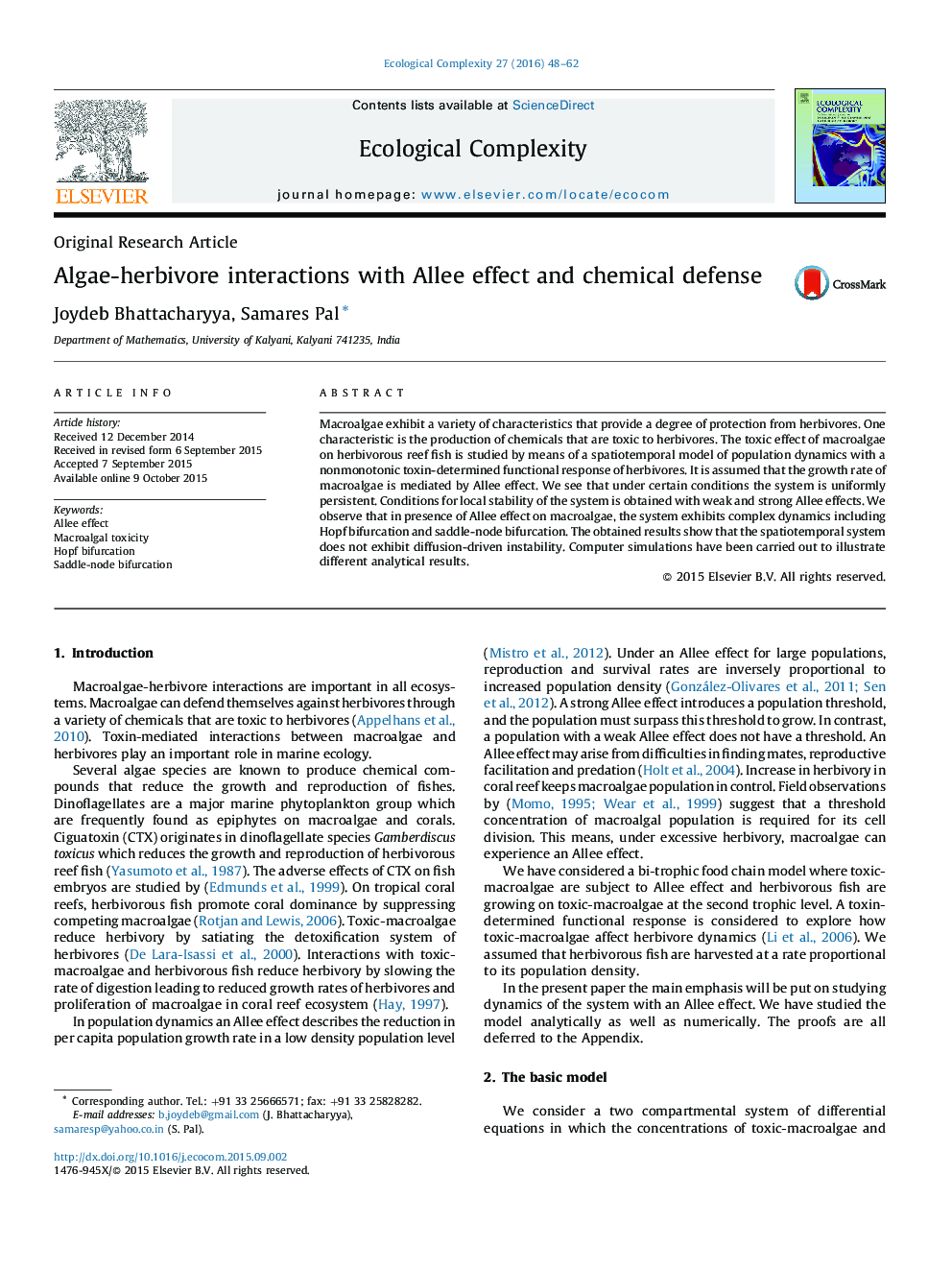| Article ID | Journal | Published Year | Pages | File Type |
|---|---|---|---|---|
| 4372346 | Ecological Complexity | 2016 | 15 Pages |
•Effects of macroalgal-toxicity is studied with non-monotonic growth of herbivores.•The growth rate of macroalgae is assumed to be mediated by Allee effect.•The non-spatial system exhibits Hopf bifurcation and saddle-node bifurcation.•Stability and direction of the Hopf bifurcation system are determined.•The system does not exhibit diffusion-driven instability.
Macroalgae exhibit a variety of characteristics that provide a degree of protection from herbivores. One characteristic is the production of chemicals that are toxic to herbivores. The toxic effect of macroalgae on herbivorous reef fish is studied by means of a spatiotemporal model of population dynamics with a nonmonotonic toxin-determined functional response of herbivores. It is assumed that the growth rate of macroalgae is mediated by Allee effect. We see that under certain conditions the system is uniformly persistent. Conditions for local stability of the system is obtained with weak and strong Allee effects. We observe that in presence of Allee effect on macroalgae, the system exhibits complex dynamics including Hopf bifurcation and saddle-node bifurcation. The obtained results show that the spatiotemporal system does not exhibit diffusion-driven instability. Computer simulations have been carried out to illustrate different analytical results.
